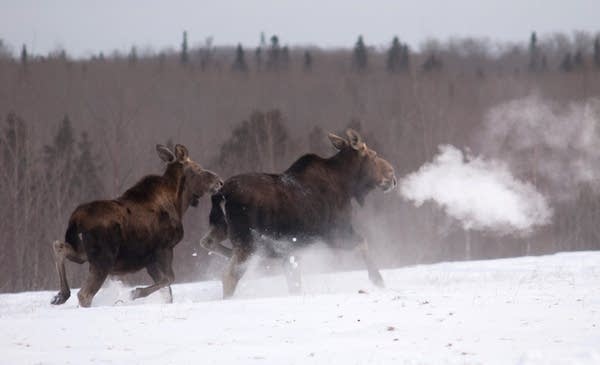Minnesota’s moose count holds steady, but they’re not out of the woods

In this 2014 photo provided by the Minnesota Department of Natural Resources, a moose calf follows its mother in the snow near Grand Marais, Minn. The DNR's 2024 survey shows herd estimates stable amid ongoing concerns over climate change, parasites and predators.
Pete Takash | Minnesota DNR file via AP
Go Deeper.
Create an account or log in to save stories.
Like this?
Thanks for liking this story! We have added it to a list of your favorite stories.


